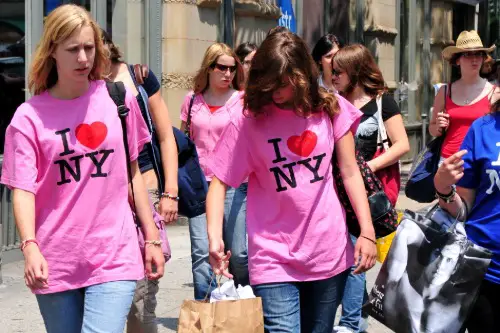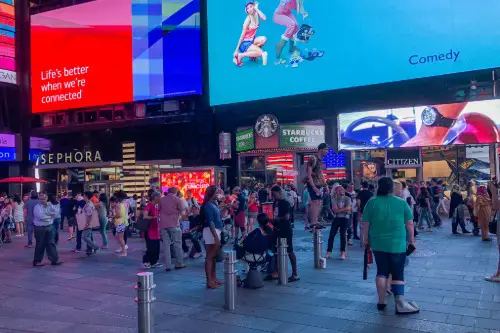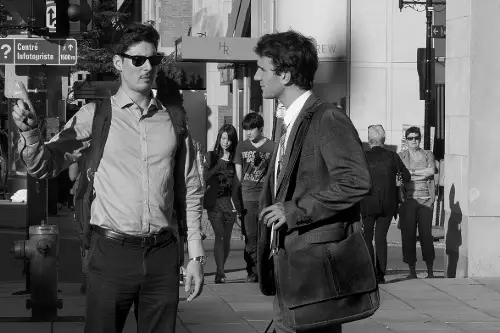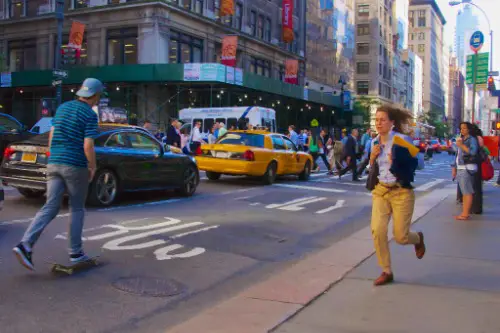1. Treating “Free Refills” as an Invitation to Overindulge

In America, free refills on drinks are part of the dining experience, but that doesn’t mean you should treat it as an open bar. Tourists who go overboard—asking for 10 refills or filling their cup to the brim when they only paid for one—can be seen as inconsiderate. Think of it as a courtesy that restaurants extend, not an excuse to binge on soda or coffee.
2. Talking Loudly in Public Spaces

Americans are often considered a loud bunch, but there’s a difference between engaging in a lively conversation and having a voice that could make the walls vibrate. Whether it’s in a restaurant, on a crowded train, or at a tourist site, tourists speaking at full volume can make those around them uncomfortable. Keeping your voice down helps maintain a sense of shared public space and respect for others.
3. Ignoring the “Stand Right, Walk Left” Rule on Escalators

If you’ve ever visited a big city like New York or Chicago, you’ve probably seen this common dance: on escalators, locals stand to the right and walk on the left. It’s not just a suggestion—it’s an unwritten rule for smooth flow. Tourists who don’t adhere to this can cause congestion and frustration, especially during rush hours when everyone’s in a hurry. It’s a little thing, but it goes a long way in keeping everyone on their way.
4. Not Understanding Tipping Etiquette

In the U.S., tipping is an essential part of service industry wages. Tourists who don’t tip properly, or at all, can be seen as disrespectful to servers. While 15-20% is the standard for good service, a smaller tip or skipping it altogether sends a message that you don’t value the service you received. Remember, tipping is seen as part of the transaction, not a charity donation.
5. Lacking Patience at Tourist Attractions

Whether it’s waiting in line for an iconic statue, a museum, or a popular event, tourists who grow visibly impatient and disruptive make the experience worse for everyone else. People from overseas sometimes find American lines intense, but learning to manage your frustration and wait your turn can help maintain the good vibes.
6. Stepping Into the Street without Looking

In the U.S., jaywalking is usually frowned upon, especially in places where cars zip by at high speeds. Tourists who cross streets without paying attention to traffic signals or other vehicles can put themselves and others at risk. It’s important to remember that cars have the right of way in most situations, so following traffic laws isn’t just for your safety—it’s for everyone’s.
7. Overusing the “Do You Know Who I Am?” Attitude

If you’re visiting, it’s best to leave the “I’m too important to wait” attitude at home. America values friendliness and equality, and acting entitled or superior doesn’t sit well. Whether you’re in line at a museum or in a local shop, expecting special treatment just because you’re a tourist or have a certain status can come off as arrogant and rude.
8. Taking Photos Without Permission

Taking pictures in public places is normal, but tourists who snap photos of people without permission can cross a line. This is especially true if you’re photographing someone’s private property or taking close-up shots of people who clearly don’t want to be part of your vacation album. The golden rule? Ask first or respect personal boundaries.
9. Making Loud Comparisons to Other Countries

It’s natural to see similarities and differences between your homeland and the U.S., but constantly bringing up how your country does things better can be off-putting. Whether it’s the healthcare system, transportation, or even food portions, making these comparisons can seem judgmental and dismissive of American culture.
10. Speaking to People as If They’re a Tour Guide

It’s tempting for tourists to ask every stranger on the street for help, but it can become overwhelming for people just trying to get to work or run errands. Asking directions is fine, but if you’re going to request detailed itineraries or personal recommendations, it’s best to engage people who work in tourism or customer service, rather than putting locals in the position of being your unofficial tour guide.
11. Not Respecting Quiet Zones

Americans love their parks, libraries, and peaceful cafes. Tourists who don’t respect these quieter spaces—whether by using their phones loudly or holding boisterous conversations—are being disrespectful. Keep your voice down, put your phone on silent, and remember that not every space is a party zone.
12. Walking Slowly and Blocking Sidewalks

Especially in busy urban centers, tourists walking in big groups and stopping suddenly to take in the sights can create unnecessary traffic jams. If you’re moving slowly or stopping to look at a map, step to the side so that locals and other tourists who need to keep moving don’t get frustrated.
13. Expecting Everything to Be the Same as Back Home

It’s easy to feel comforted by familiar customs and habits, but tourists who expect American culture to mirror their own can seem dismissive or unappreciative. Embracing the differences and taking the time to understand them can make your visit smoother—and more enjoyable for everyone.


